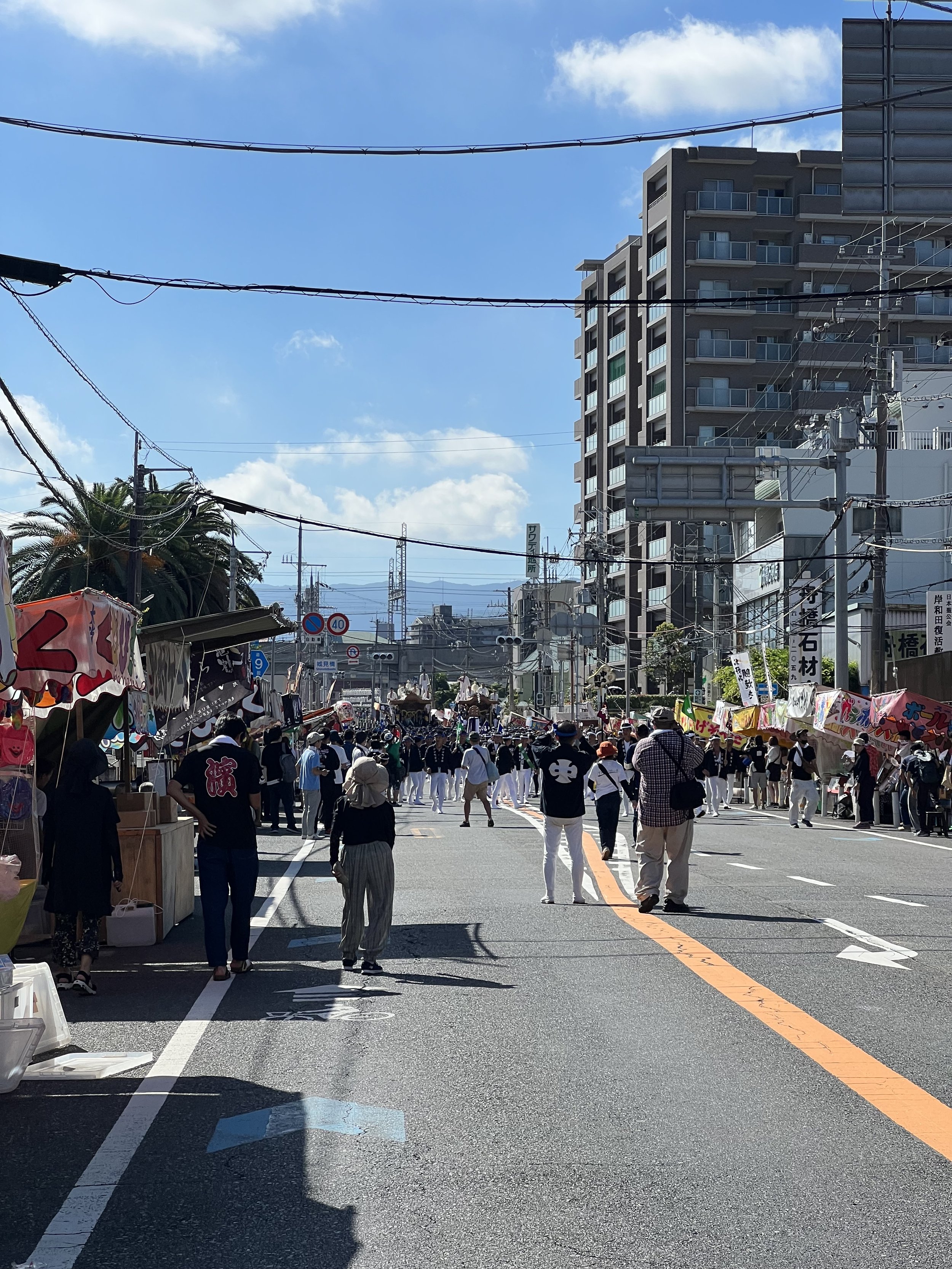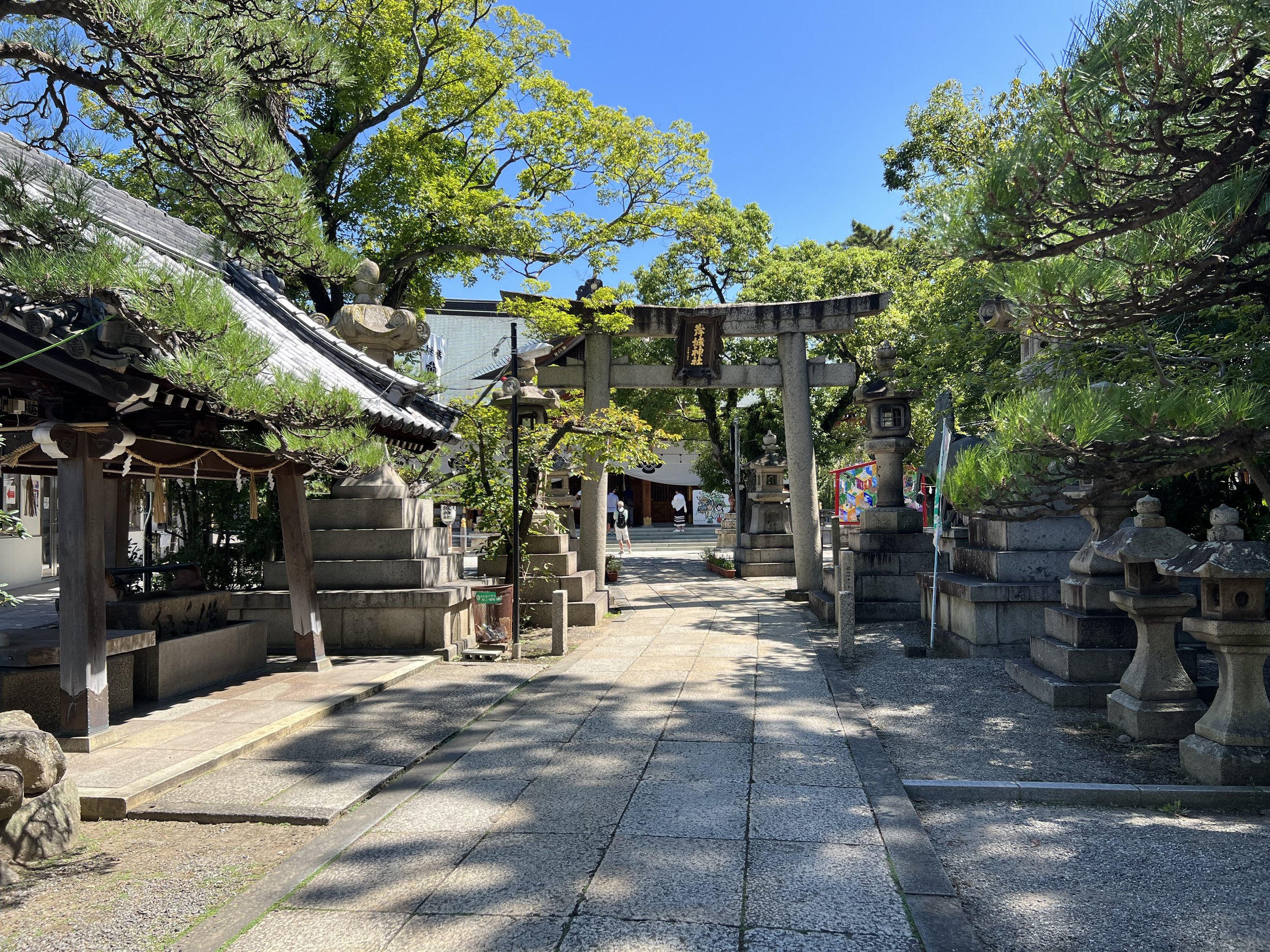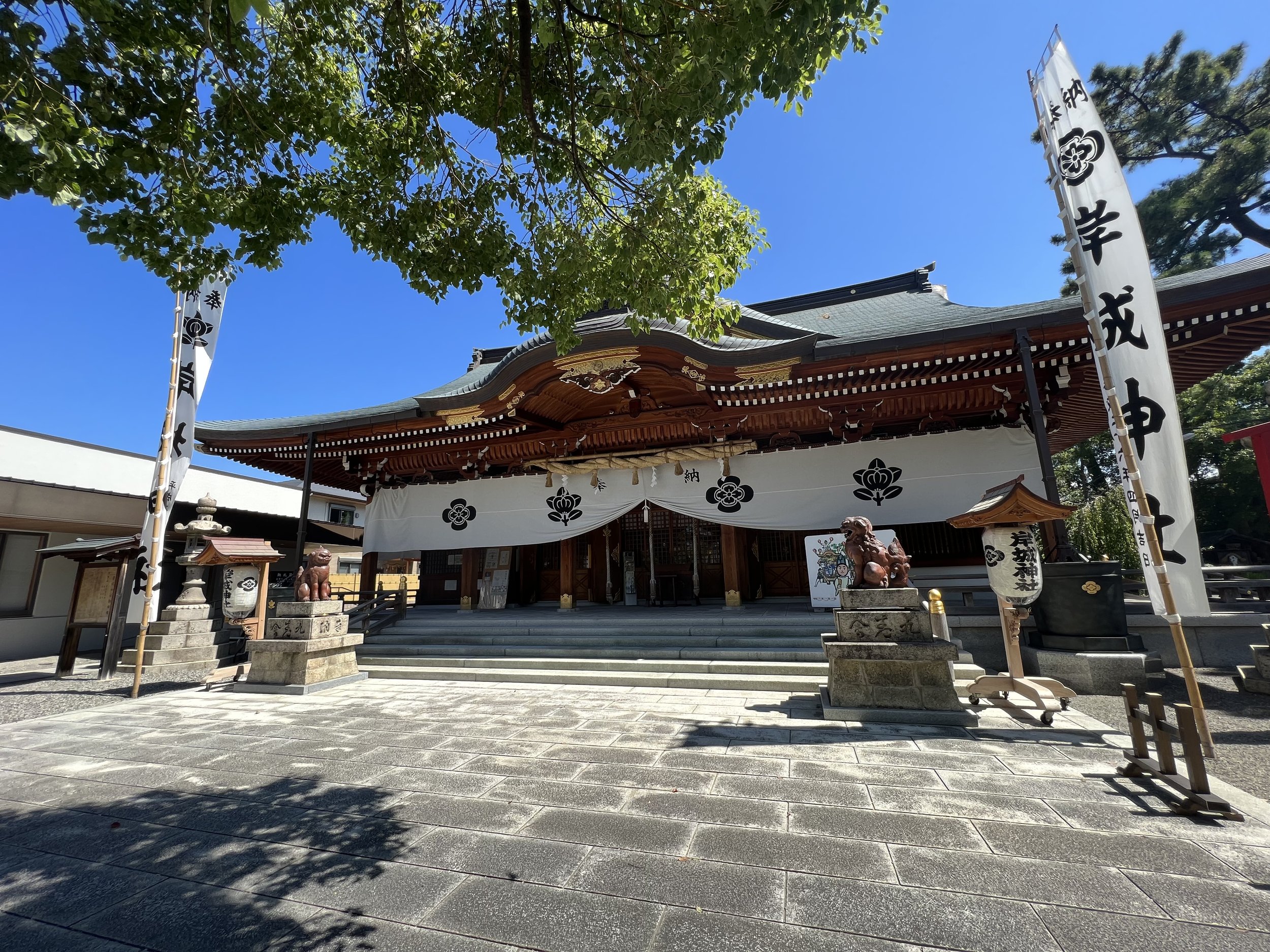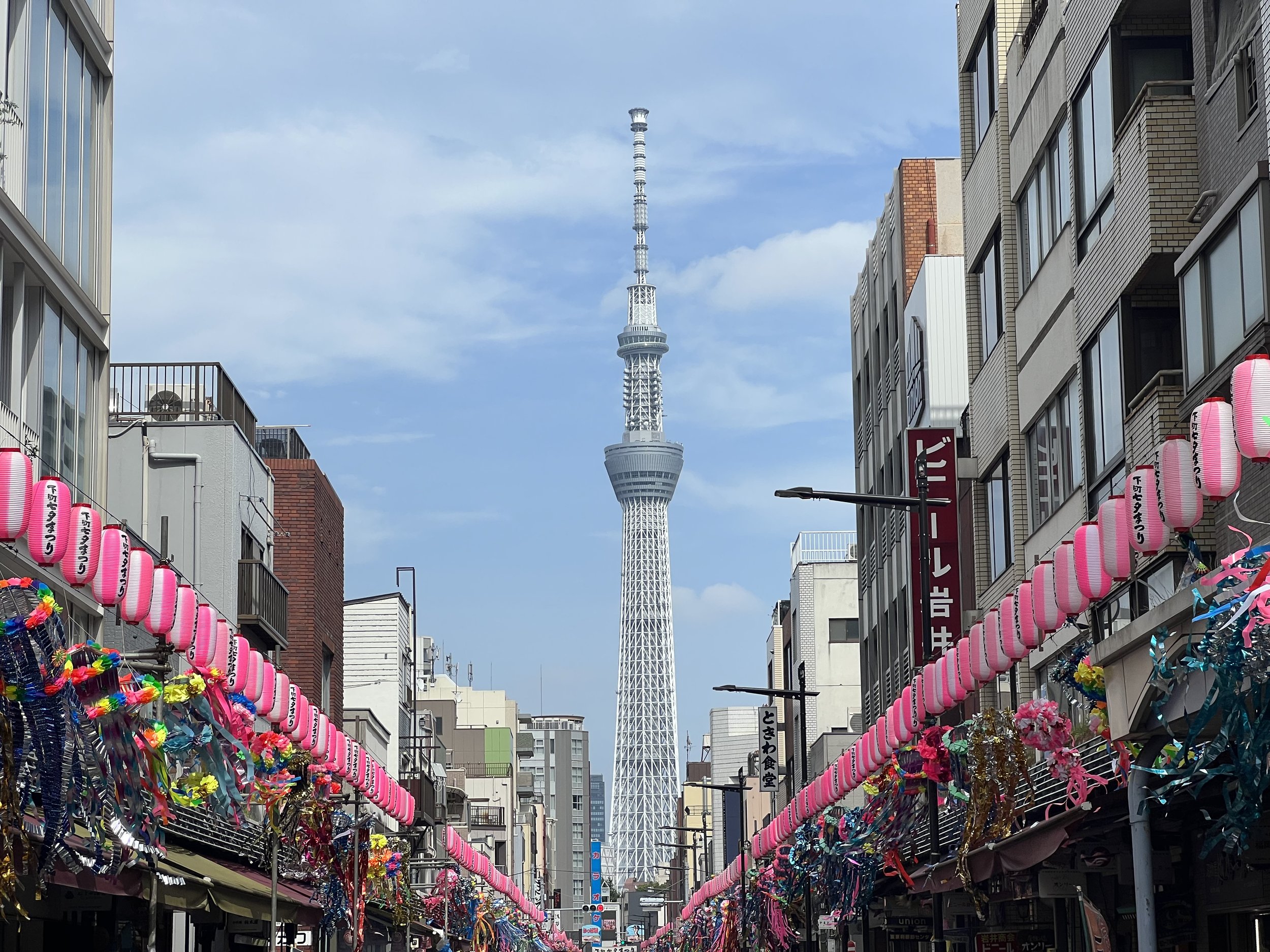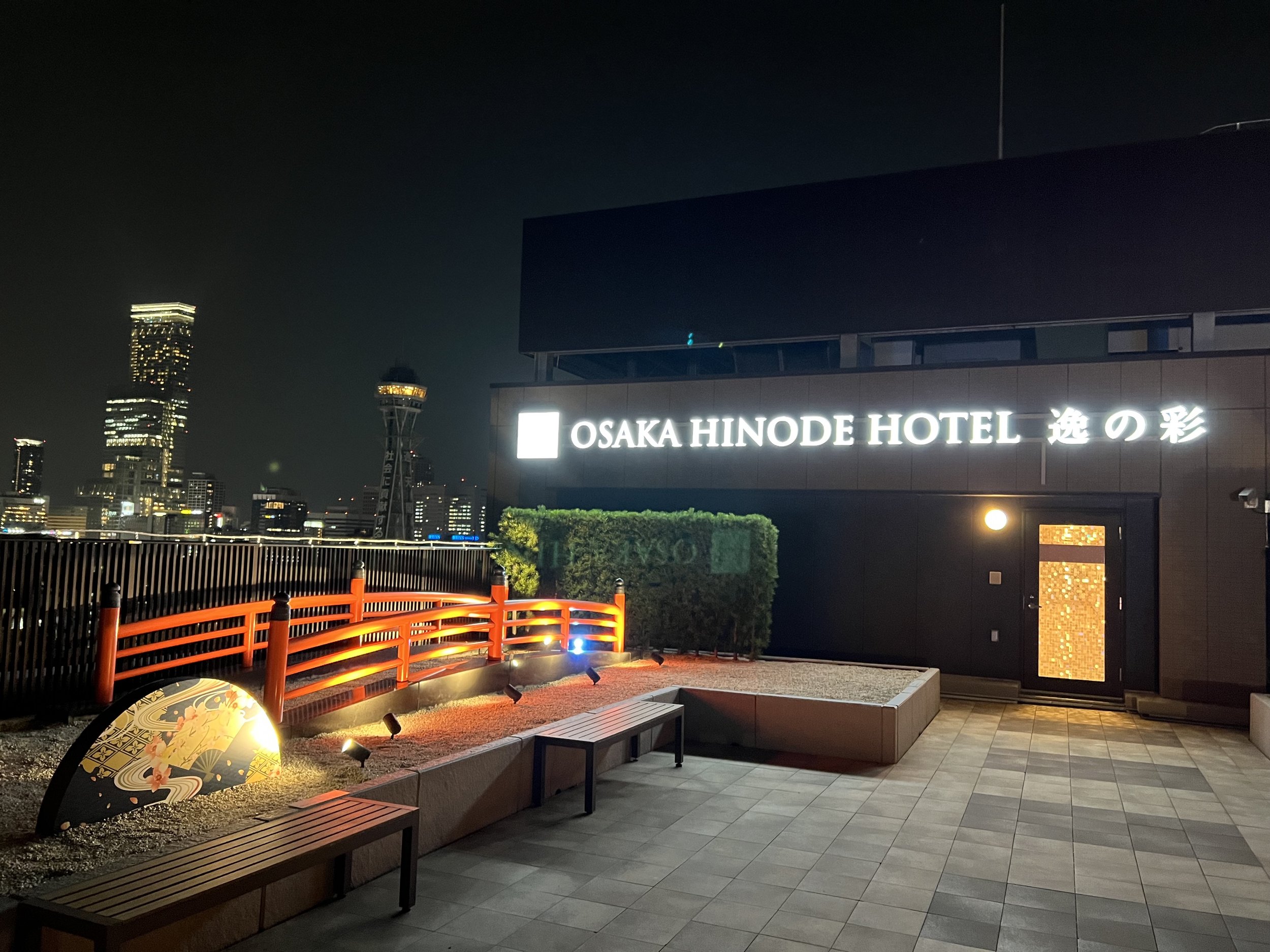Kishiwada Danjiri Matsuri: A Guide to Japan's Most Adrenaline-Fueled Festival
The Kishiwada Danjiri Matsuri is a Japanese festival taking place every year in mid-September in the city of Kishiwada (岸和田市), in Osaka Prefecture. I was lucky enough to be in Osaka in 2023 during the weekend it took place, and decided to check out this festival without knowing how unique and unforgettable this experience would be.
Read on if you'd like to find out more about this festival, get an insight from my experience, and discover my tips and some practical information if you're planning to attend this year!
What is the Kishiwada Danjiri Matsuri?
The Kishiwada Danjiri Matsuri (岸和田だんじり祭) is known as the most famous Danjiri Matsuri (which can be translated as “cart-pulling festival”) in Japan. Danjiri are big, wheeled wooden carts resembling miniature temples, with ornaments and elaborate carvings.
Started in 1703 by the local daimyō (feudal lord), the Kishiwada Danjiri Matsuri symbolizes a rich harvest and good fortune for the local community. The festival consists of a parade of 34 large wooden shrine floats, each belonging to a different neighborhood of Kishiwada, pulled at high speeds by teams of festival participants through the narrow streets of the city. The most impressive part of the parade is called yari-mawashi, an act during which hundreds of participants energetically pull the floats using long ropes at high speed, thus forcing them to make perpendicular turns.
Given that each float weights about 4 tons, this matsuri is considered one of the most dangerous in the country, due to the risk of accidents during the yari-mawashi.
The festival is held every year over two days in September on the weekend that precedes the “Respect for the Aged” Day (a public holiday on the third Monday of the month).
What to Expect? A Look Back at the Kishiwada Danjiri Matsuri 2023
Luckily for me, I was in Osaka on the weekend of the Kishiwada Danjiri Matsuri in 2023 and decided to see this intriguing matsuri for myself. I left early on the first day of the festival to be at Kishiwada station by 9am. As soon as I got off the train, I began to hear music and singing in the distance, and not a minute after I stepped out of the station, I saw the first cart rolling down the street, and felt the joyful, vibrant energy surrounding me as the spectators applauded as they passed. Excited to see more, I started walking around town, passing costumed festival attendees preparing to join the procession, and could see the lines of food stalls getting ready for the day.
One thing that I discovered while learning online about the festival was that it was possible to see the floats during the yari-mawashi from special viewing seats that are set up near Kishiwada Harbor at a location called Kankan-ba: the mountain side (Co-op Kishiwada store parking lot) and the sea side (Kankan Bayside Mall). I decided to reserve a seat on the mountain side, and was not disappointed by the premium location to admire the parade and the yari-mawashi!
I was amazed by the breathtaking spectacle of the carts accelerating as they approached the street corner and abruptly changed direction. Most impressive of all are the people who carry out the operation: the hundreds of people who suddenly start running in synch as they pull the float, but mostly the brave man who stands at the top of the float, called Daiku-gata (carpenter), who gives signals and directions with his uchiha (fans) and managed to keep his balance during the yari-mawashi, then performs a cheerful dance once the maneuver is complete.
Watching the festival participants at work, it's clear that this task requires a great deal of training, teamwork and a perfect timing and coordination. Traditional music and chants also add to the exciting atmosphere, with the yari-mawashi done quickly to the beat of drums and shouts of the pullers. It was also great to see not only men, but also women and children participating together, with the children carrying the rope at the front of the procession, while the adults were closest to the float.
Fortunately, there were no accidents while I was admiring the parade, and I can only congratulate the organizers on their methodical management and control of the event.
As I watched the festival, a Japanese Ojisan (elderly man) came to chat with me, happy to share his knowledge of this tradition, and I was able to learn a lot about the festival from him, information that I'm trying to share as accurately as I can remember in this article.
Everything to Know for the 2024 Kishiwada Danjiri Matsuri
📅 Save the date! In 2024, the Kishiwada Danjiri Matsuri will take place on 14-15 September, from 6am to 10pm. You can find more information on the festival on Kishiwada city’s website here (translation in English available).
1/ How to Get There
The nearest train station to the festival is Kishiwada station on the Nankai Main Line. If you're coming from Osaka, depending on your point of departure, you can get to Kishiwada in less than 30 minutes. Once you arrive at Kishiwada station, you can't miss the parade as it passes right by the station and you can follow the crowds and barriers on the road to get to the festival area.
2/ When and Where to See the Parade
If you're wondering when to go, remember this: the earlier you go, the crazier the parade is. If you want to see the carts at full speed, I've been told you have to go right from the start, at 6 a.m., during the Hiki-dashi (opening of the race). Why? Because the children don't join the parade until later in the day, so the parade is at its craziest when it starts with only the adults pulling the carts. The speed of the carts slows as the day passes and the pullers get tired, and the parade turn into a slow and peaceful procession in the evening during the Hi-ire Eikou (parade of lantern-lit danjiris) when the danjiris are adorned with red lanterns.
Another tip: don’t hesitate to walk around during lunchtime. While festival-goers are having lunch, the floats are being repaired in the nearby streets. This is probably the best time to see them up close.
Regarding where to see the parade, you can see for free the parade all around the city, some of the best spots to watch the action are near the major intersections and along the narrow streets where the yari-mawashi occurs (you can find a map of the festival here). Arriving early is advised, as these areas can become crowded quickly. But also be mindful of your surroundings, and avoid standing too close to the action.
As mentioned previously, if you are willing to pay, buying tickets in advance to see the parade from the viewing seats can be an interesting option if you’d like to be seated while having a good view of the yari-mawashi. You can buy tickets in advance on KK-Day (in English).
3/ What to Bring with You
September is still very hot in Japan, so I strongly recommend that you bring everything you need to avoid sunburn and heatstroke (water, hat, sunscreen...). You'll have no trouble getting something to eat, as there are stalls everywhere. Why not trying traditional festival foods like takoyaki (octopus balls), yakitori (grilled chicken skewers), and taiyaki (fish-shaped pastries filled with sweet red bean paste)?
4/ Where to Stay
If you’d like to see the festival from the start, you might want to find a hotel in Kishiwada, or catch one of the first trains departing from Osaka.
If you are looking for a hotel in Osaka, my personal favorite, which is located next to Ebisucho station or Tsūtenkaku, is Osaka Hinode Hotel Nipponbashi. I always try to stay there when I visit Osaka as I find the value for money excellent, with spacious and comfortable rooms, onsen baths with sauna, lots of free facilities and a communal area with welcome drinks available throughout the day as well as ramen served in the evening free of charge.
Other Things to Do in Kishiwada
Although Kishiwada is best known for its festival, you can take the opportunity to explore the town and see other great attractions during your stay.
1/ Visit Kishiwada Castle
Kishiwada Castle (岸和田城) was originally built in 1334. The keep was destroyed by fire caused by a lightning strike in 1827 and part of the castle was destroyed during the Meiji Restoration.The current 3-story keep was built in 1954, and a reconstruction was completed in 2019. Kishiwada Castle Garden, called Hachijin-no-Niwa, is a modern-style garden designed in 1954 which has been designated as a National Place of Scenic Beauty in 2014.
Entry to the keep itself costs ¥300 for adults (free admission for children). Inside, you can see displays showcasing original suits of armor and historical artifacts, as well as temporary exhibitions, and admire from the third level views of the castle’s garden, of Kishiwada and Osaka Bay.
2/ Learn More About the Festival at Kishiwada Danjiri Kaikan
Just next to the castle, it is worth noting that there is a museum dedicated to the Kishiwada Danjiri Matsuri called Kishiwada Danjiri Kaikan (岸和田だんじり会館) where you can learn more about the festival and see Danjiri up close. If you visit Kishiwada but can't attend the festival, this could be an interesting alternative.
3/ Discover Kishiwada’s Temples and Shrines
If you've read any of my other blog posts about Japan, you'll know that I love visiting the temples and shrines of the places I visit. I would recommend paying a visit to Kishiki shrine (岸城神社), a quiet and spacious shrine next to Kishiwada Castle.
Stone Torii Gate at the entrance of Kishiki shrine
Kishiki shrine's Main Hall
Other small temples and shrines you may be interested in visiting in Kishiwada are Sannomaru Shrine (三の丸神社), a small inari shrine, and Takojizo Tensho-ji (蛸地蔵 天性寺), one of Japan’s largest Jizodo temples.
4/ Admire the Traditional Gardens of Gofuso
Kishiwada Gofuso (岸和田市 五風荘), located near Kishiwada Castle, is a traditional Japanese residence that is now a restaurant serving Japanese traditional kaiseki (multi-course) dishes as well as special lunch set menus. The gardens are open to the public and can be visited free of charge. If you’d like to enjoy a meal there, reservation in advance is required (more information is available on Gofuso’s website here). I haven’t been there myself, but have it on my list for my next visit to Kishiwada.
5/ Pass by Kishiwada Shotengai on Your Way Back to the Station
It's always fun to visit the local shotengai (covered shopping street) where you'll find all sorts of stores, cafés and restaurants (although I imagine some will be closed during the festival).
To Conclude
The Kishiwada Danjiri Matsuri offers a unique opportunity to witness one of Japan's most spectacular and adrenaline-fueled traditions. It’s an extraordinary and thrilling experience that I highly recommend if you're in Japan in September! I hope this article helps you to get an idea of what this festival is all about and to prepare for the event if you're thinking of attending. Note that if you miss the matsuri in September, a smaller version is also held in October.
Found this article helpful? Buy me a coffee. 😊
Want to stay in touch? Subscribe to my monthly newsletter (with latest articles, updates, travel tips and more...) delivered straight to your inbox. 📩




